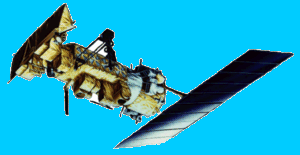 U.S. Department of Commerce
U.S. Department of Commerce U.S. Department of Commerce
U.S. Department of CommerceNational Oceanic and Atmospheric Administration
NOAA Operational Environmental Satellites

The TOVS system consists of three instruments: the HIRS/2I, the SSU, and the MSU. All three instruments measure radiant energy from various altitudes of the atmosphere and the data are used to determine the atmosphere's temperature from the Earth's surface to the upper stratosphere.
This instrument detects and measures energy emitted by the atmosphere to construct a vertical temperature profile from the Earth's surface to an altitude of about 40 km. Measurements are made in 20 spectral regions in the infrared band. Note that one frequency lies at the high frequency end of the visible range.
Temperature measurements from the upper stratosphere are derived from radiance measurements made in three channels using a pressure modulated gas (CO2) to accomplish selective bandpass filtrations of the sampled radiances. The gas is of a pressure chosen to yield weighting functions peaking in the altitude range of 25 to 50 km where atmospheric pressure is from 15.1 to 1.5 mbar respectively. This gas is contained in three cells, one of which is located in the optical path of each channel.
This unit detects and measures the energy from the troposphere to construct a vertical temperature profile to an altitude of about 20 km. Measurements are made by radiometric detection of microwave energy divided into four frequency channels. Each measurement is made by comparing the incoming signal from the troposphere with the ambient temperature reference load. Because its data are not seriously affected by clouds, the unit is used along with the HIRS/2I to remove measurement ambiguity when clouds are present.
For a comprehensive description of the NOAA Polar-orbiting Operational Environmental Satellites, click HERE to view the on-line users guide.